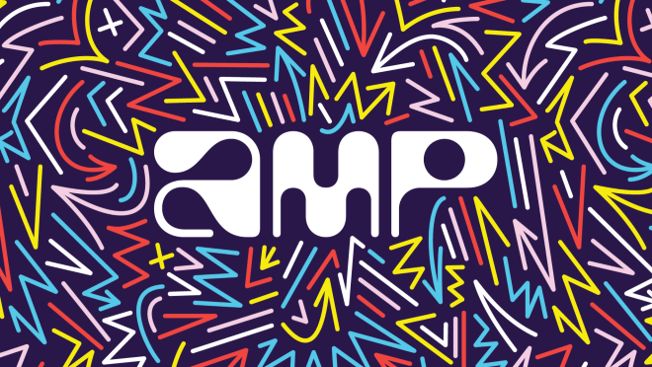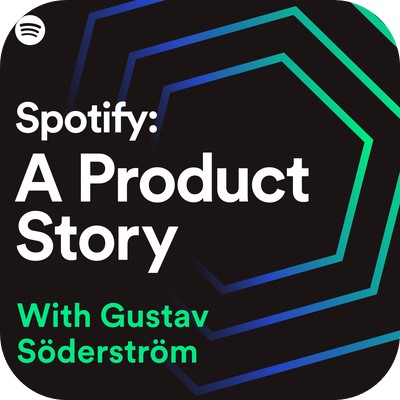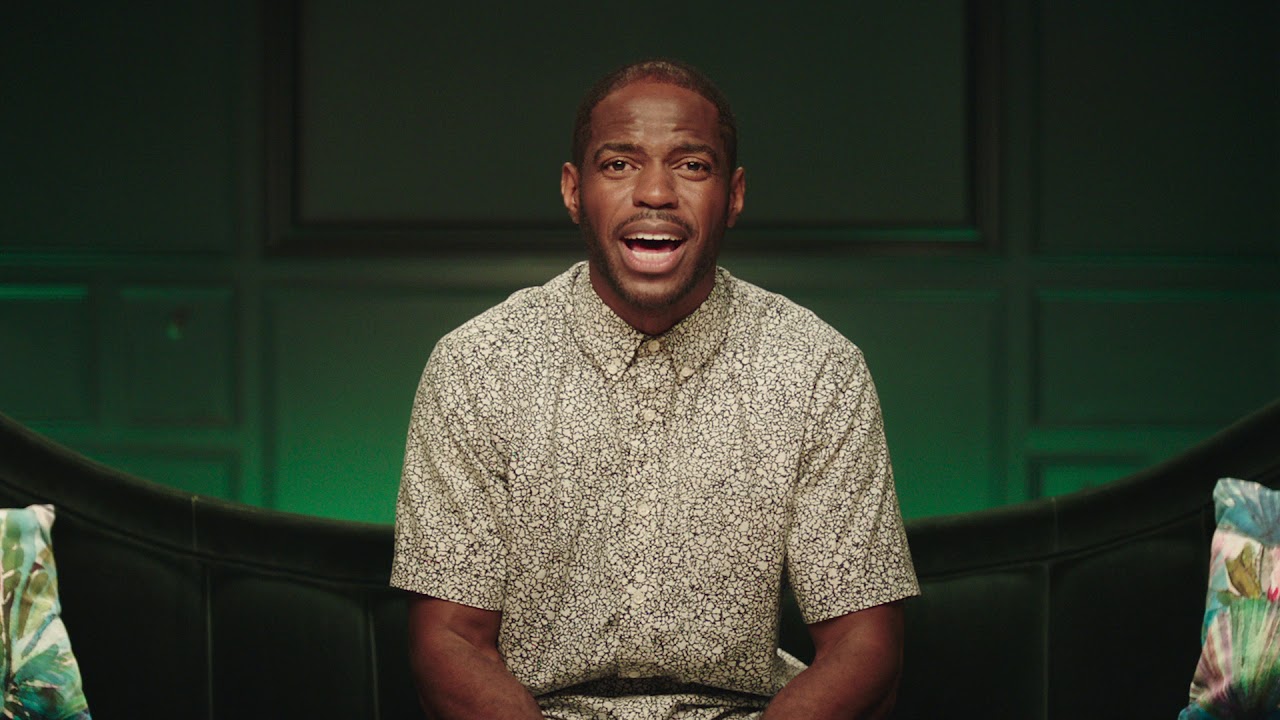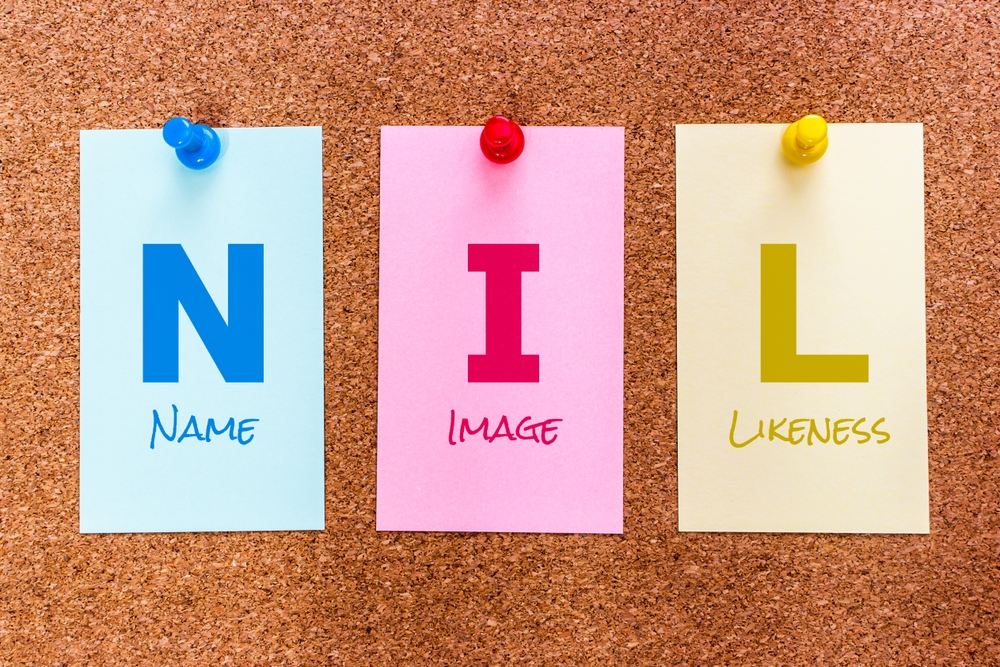
At times, I feel like a tired coach or member of a clergy (careful there, Fred) trying valiantly to get some basic principles across the goal line or in a sermon. Truth be told, even though the worlds of media (radio, to be specific) and technology are vast with new concepts and innovations constantly being hatched, the truth is, this blog tends to circle around ideas that are very finite. Many of the same themes keep coming up again and again.
One that I truly enjoy talking about is the seeming obsession big tech apparently has with the world of broadcast radio. Whether it’s Apple, Amazon, or Spotify, they have all made serious attempts at trying to replicate radio. Or as they would probably admit, creating a better version of the medium that many of us have made our careers.
And there have been some epic fails over the past several years as these tech companies with infinite reserves of cash and brilliant people (engineers, coders, scientists, creatives) have tried their hand at radio – and have found themselves back at the drawing board.
Apple’s big shot at radio – Apple Music 1 (the former Beats 1) – never has made much of a ripple on the music or radio scenes, despite classy talent like Zane Lowe (pictured) about whom I’ve written about over the years. It launched in 2015, has simply not had much in the way of cultural or mass appeal impact, in spite of being a 24/7 radio services. My guess is that most of you have never listened to it.
classy talent like Zane Lowe (pictured) about whom I’ve written about over the years. It launched in 2015, has simply not had much in the way of cultural or mass appeal impact, in spite of being a 24/7 radio services. My guess is that most of you have never listened to it.
 And then, Amazon’s AMP radio which officially shut down this past October after only 7 months or so “on the air.” Despite a lot of hype for a service where anyone could launch their own radio show, being a full-time jock turned out to be more work with less payoff than being an actual air personality on a broadcast radio station.
And then, Amazon’s AMP radio which officially shut down this past October after only 7 months or so “on the air.” Despite a lot of hype for a service where anyone could launch their own radio show, being a full-time jock turned out to be more work with less payoff than being an actual air personality on a broadcast radio station.
Spotify hasn’t just tried to tackle “doing radio” – it has approached the mission with a certain level of obsessiveness. There was the “Daily Drive,” a product designed to become your favorite morning show, mixing in a combination of songs and podcasts on your playlist with service elements in a personalized package.
“Daily Drive” hung on for little more than a year before the adults at Spotify shut it down. Aside from having the warmth of a brick, the concept suffered from technical glitches. The complaints and requests for “fixes” still linger in community forums and chats.
concept suffered from technical glitches. The complaints and requests for “fixes” still linger in community forums and chats.
So, what was the problem with “Daily Drive” and many of these wannabe services that attempted to create radio formats or platforms, but usually last about as long as a lousy new Hot AC sign-on in Wichita or Flint? As much as consumers may complain about AM and FM radio in their hometowns or that radio today is a shadow of its former self, creating a better radio mousetrap apparently isn’t easy – even with all the tools, resources, and green lights from the corner office.
And that was why I was fascinated when Steve Goldstein, the “Prince of Podcasts” sent me a link to a Spotify show, “A Product Story,” hosted by Gustav Söderström. He’s the company’s Chief Research and Development Officer, and each episode examines another Spotify product or innovation….
….transparently.
 Spotify takes off all the wraps (OK, most of them) to walk you through the process, the trail, the error, the thinking, theorizing, and steps it takes to launch a product. The episode Steve sent me, “In pursuit of the perfect session – a DJ just for you,” is the latest attempt by Spotify to create a competitive radio show.
Spotify takes off all the wraps (OK, most of them) to walk you through the process, the trail, the error, the thinking, theorizing, and steps it takes to launch a product. The episode Steve sent me, “In pursuit of the perfect session – a DJ just for you,” is the latest attempt by Spotify to create a competitive radio show.
And the nearly one hour episode is worthy of your time because it is, in essence, the story of Spotify’s latest deep dive in their effort to out-radio radio.
Perhaps you’ve heard of DJ X, Spotify’s version of AI DJ launched last month to much interest from the tech community. In radio, we were probably taking about the Holiday Book or what might become of AM radio in electric cars. But in Sweden and many other headquarters all over the globe, Spotify was refining its process to create a “perfect DJ.”
For them, it was a “moon shot” project, requiring all hands to figure out this radio puzzle.
And it turns out to be a quite a process. The podcast comes off as a SWOT session Spotify runs to essentially “reverse engineer” broadcast radio – what do people still like about it, why they still listen in spite of….well, everything, and what it might take to truly disrupt it. It’s a fascinating insight into how they view us. If you want to get inside the other guy’s head, here it is.
Gustav talks about radio’s nostalgic appeal, its journey from dramas until TV came along, and forcing radio to pursue the music format structure it still has today.
Why does radio still work in spite of the fact “it really sucks.” After all, the Spotify scientists concludes it starts in the middle of songs when you turn it on, plays “bad songs,” is burdened by commercial after commercial, and features absolutely no personalization. And yet, it somehow works.
Gustav and the Spotify team concede that people still listen to radio, in spite of the presence of a superior product – theirs! And so the big goal is to “capture and improve everything people love about the radio” – and of course, make it better.
Their research reveals there are actually two ways we experience radio/audio – that is, the way people listen:
- Mind busy – This is when we turn on the radio, but it’s in the background, accompanying work or some other more dominant activity. Typically, we choose music.
- Mind free listening – We listen to the radio, but we’re paying attention, perhaps when we’re working out, walking the dog, or just chilling. This is often the zone we’re in when we select a podcast.
The Spotify team concludes that combining the two might reach a lot of people, but with limited appeal because the two styles of content clash with one another.
This is why goodly amounts of music and talk frequently don’t go well together. in fact, they often clash. (This episode makes the argument that active morning shows that feature a lot of music might be at odds with the ways in which people actually listen.)
It is this rationale that drove the Spotify team to create a music show hosted by a DJ who talks minimally and mostly about music.
To be successful, Gustav explains, the Spotify brain trust knows it needs to develop a “magic trick” – something that makes the user have an “oh wow!” moment when she first hears this show. That turns out to be personalization – the DJ speaks your name as part of its presentation, pulls songs (which are likely to be older ones) from your playlist, and predicts what types of new music you might enjoy.
personalization – the DJ speaks your name as part of its presentation, pulls songs (which are likely to be older ones) from your playlist, and predicts what types of new music you might enjoy.
Of course, none of this would have been possible with the AI advancements that have been made in just the past year. Gustav talks about the revolutionary use of ChatGPT, as well as the discovery of a company called Sonantic” that makes synthetic voices sound more real.
Spotify was so impressed with Sonantic they bought the company in mid-2022. You may remember the Val Kilmer character’s voice had to be synthesized due to the actor’s throat cancer for the sequel, “Top Gun Maverick.” Yes, that was Sonantic.
(At the end of this post, there’s a segment of Kilmer’s AI-generated voice, the technology used in the film.)
So, armed with the technology, the quest was to find the right voice. And the example that kept coming up in conversation was an actual Spotify executive, Xavier Jernigan (pictured), a former label guy who also hosted some of the company’s podcasts.
hosted some of the company’s podcasts.
Jernigan – or X – as he is called turned out to be the right style and choice. He reminds me a bit of sports commentator Steven A. Smith with a mix of Ice T . He’s got a colloquial sound, designed to create a sense of trust with listeners – in other words, a relationship.
The podcast walks the listener through the grind of “digitizing a personality” (and not a voice). It may remind you of what Alpha has tried to accomplish with AI Ashley, but on a much grander scale, of course.
It made me wonder what the process might have been like if a radio company tried the same thing with an existing personality. While he may have hated the concept, the late Jim Ladd might have been the perfect subject for a rock music DJ, an AI personality who could remind you why all those great classics are still worthy of your time or your ear.
In Philly, WMMR’s Pierre Robert would make another fascinating experiment – if he would sit still for it. And yet, a Pierre AI DJ who doesn’t just talk about music, but other “life stuff” is probably well beyond the capacity of Artificial Intelligence technology – at least for now.
Bob Stroud from WDRV would be another interesting science experiment, as would have the late Detroit legend, Ken Calvert. After listening to this episode and thinking about contemporary talent, this is going to happen – and not just for recording AI “tags’ and promos.
There’s also an insightful segment talent, agents, management, and ownership should tune into about contracts and compensation. His deal has to be restructured, and both sides relied on a version of NIL – Name, Image, Likeness – that has become so common in just the last year or so in the sports world
Name, Image, Likeness – that has become so common in just the last year or so in the sports world
Later in the Spotify episode, Emily Galloway who becomes lead on the AI DJ project talks about the importance of combining “pixels and decibels.” The decision is made to give the Jernigan’s synthesized personality a name, DJ X. And the team makes the call to reveal the DJ is, in fact, an AI product (along the same lines Alpha’s Phil Becker made a similar decision for his radio station).
So, thanks to Spotify, what are the takeaways from this effort? What can radio broadcasters learn from Spotify’s sandbox?
- Every product needs a magic trick – Discussed earlier, what’s the feature that makes it different and gets people talking? This applies to personalities, of course, but also formats, events, and stations themselves. Without it, you’re just the second Country or third Classic Rock station in your market.
- Addition by subtraction – Products are rarely improved by adding more features. In fact, removing “OK things” is often better than finding another benchmark to add into the lineup of a morning show or the schedule of a radio station.
- The balance between instinct and science – Spotify can do as much research as they like. But as they learned from a project like DJ X, creativity is often instinctual to begin with. Their philosophy became “Don’t trust your gut, but test your gut.” And they note that a process that’s 100% instinct is no better than one that’s 100% (research) insights – and vice-versa.
- Question everything – In our fast-moving processes, every member of the team needs to be able to speak up and disagree. As Galloway reminds, “If something doesn’t make sense, it probably doesn’t make sense.”
- Too many cooks – If you’ve been on the creative side of radio (or anything), an overabundance of opinions can be debilitating. When Galloway joined the project, they were using one Slack channel overflowing with 40 people. One of her first moves was to greatly reduce the number of “team leads,” making decision-making more streamlined.
- Get real – We know this in radio,, but we often fail to get it to come out of the speakers. When you’re dealing with an artificial DJ, Spotify learned you’d better be as authentic and transparent as possible. Giving the AI DJ a name was a no-brainer. Openly admitting DJ X isn’t a person was a start. As it says, “Hey, I’m Xaver – I’m your AI DJ on Spotify” removes the speculation and allows consumers to process what they’re listening to.
- Don’t fear the research – The process of creating Spotify’s artificial DJ was one where the team had to buy into the notion user feedback isn’t dangerous. DJ X was researched constantly, especially A:B testing to glean insights about how to improve the product.
- Get there quickly – Radio people know this from their PPM experiences. Spotify sees it in all their user metrics. If you’re serious about building trust or a relationship, it has to happen in the first 20-seconds. The podcast also hints at clock strategy – starting a DJ X with a familiar song the user loves before trying to expose them to something new
How did Spotify roll out DJ X and what’s their marketing spin? You can check it out in their release, “Meet Your DJ,” from last month. Here’s their :60 promo video:
Depending on how you perceive this attempt by Spotify to humanize their service with AI (now THAT’s an oxymoron!), it makes you wonder how fatiguing this product may get when it’s just DJ X and pretty much all he talks is music. We all have friends or family members with a one-track mind. After a while, we pretty much know how the conversation of going to go.
The things that make/made Pat Martin, Marci Wiser, Andy Langer, Dan Carlise, and other personality icons special is they could talk more than music. They frequently observed life around them – whether topics as mundane as local weather or sports, or the vibe in town or in Washington, D.C. They looked at the music as a reflection of our culture and our society. It colored what they talked about and made their shows – and their personas – more interesting.
So, what to think about DJ X? Like reactions to talent, a show, or a song, it’s in the ear of the beholder. Here’s brief snippet of X:
I then ran across some online reviews of DJ X that are revealing.
Wired‘s Boone Ashworth is a cynic. While claiming “nobody listens to the radio anymore” and that “the radio DJ is a dinosaur, buried and compressed and repurposed to fuel endless algorithmically generated streaming playlists,” he has this to say about Spotify’s effort:
“The recent rise of generative AI has made some companies no longer content to just let their algorithms simmer in the background. They want to bring them to the forefront. Partly to show off and try to cash in on the current AI gold rush, but also, I think, in an effort to humanize their algorithms. They shove them into the spotlight to convince people the AIs are super chill, actually, and can hang with us meatsacks.”
the current AI gold rush, but also, I think, in an effort to humanize their algorithms. They shove them into the spotlight to convince people the AIs are super chill, actually, and can hang with us meatsacks.”
And then there’s an essay in The Tacoma Ledger. Benjamin Fredell lived with DJ X for an extended period of time, oddly getting addicted in much the same way Joaquin Phoenix develops a relationship with a bot in the film, “Her.”
Here’s his conclusion:
“What’s the point of it all? I still wonder. Is it just consumption fuel for never-ending revenue? AI has entered many art spaces in the past year in ways big and small. It is growing and it is learning. What might this integration look like ten years from now when this technology advances? When the DJs actually play what you wanted to hear, because they know you better than you do.”
And here’s mine:
If radio was truly doing its job, there would be no reason for Spotify (or Amazon or Apple….) to keep trying to build a better version of us.
P.S. Here’s the synthesized video from Sonantic featuring Val Kilmer’s AI voice:
- For Radio, Where Does Digital Revenue Go From Here? - June 6, 2025
- “My Favorite Decade Of Music Is The __’s” - June 5, 2025
- Who’s Got It Better? Talent In Commercial Radio vs. Talent in Christian Music Radio - June 4, 2025




Fascinating read, Fred. Thank you.
Interesting read. Less interesting audio content. Stephen Hawking sounded more life-like on the Big Bang Theory.
Fred,
Great Starter for Spring Week! Your conclusion is spot on.
Don’t detract from REAL RADIO.
We can get better all the time without costly distraction. Thank you.
Just like human DJs I’ve listened to in the past, “my” DJ X mispronounced an artists’ name recently. (Dobie Grey) Ouch! But I like x’s vibe! #trust #credibility
Spotify’s AI DJ sounds stilted & uninspiring. Bad audio is bad audio.
I still abide by the fact that no grace should be extended towards the onslaught of AI — tech bros who wouldn’t know a creative thought if they had one pressing forward this self-perpetuating theft machine that will cause irreparable harm if left unbaided.
Spotify should worry more about paying artists. And that ‘Wired’ guy should concern himself with publishing’s damaged business model before lobbing stones at ours.
*unabated. d’oh
Hi Fred, You keep putting out great work. This piece reminded me of the stir we’ve created with our just-released 90-min feature film RUNAWAY RADIO, about Houston’s 101/KLOL. We just hit theatres and online streaming like Amazon Prime. It’s fun to watch the young, non-radio audience become fascinated with what was achieved using the invasive power of a station like KLOL. Fans are still talking about a radio station 20 years after they pulled the plug! Maybe that is a credit to “radio” itself, without the need for AI – haha, pfant
MORE: http://www.rock101movie.com
That sounds really interesting. Hadn’t heard of the movie out here in So Cal. Thanks for letting us know!
Fred,
One of your best. Thanks for the reveal.
Right back at you. Thanks for the kind words.
Very interesting read and I’ll look forward to hearing the podcast. One thing that keeps coming to mind is, no matter how “real” it sounds, it’s not. Let’s say AI could create the “perfect” wife/girlfriend/spouse, etc. (And with constant improvements in synthetic skin and human features, perhaps it will.) Let’s say AI could create everything you ever wanted in that person…but it wasn’t a real person. Would you be interested? I think there’s something deep within us that knows that, for all our flaws and all the struggles and fights and disagreements we may have with a “real person,” that “human quality” is far more precious and valuable than everything else in the world. In fact, even as I type, think of your dog! If you could have an AI dog that was completely indistinguishable from your beloved real pet, would you be interested? I can only guess (and hope and pray) that that something deep within us will never “settle” for less than the “real thing.” Maybe if we bring “real people” back to radio, real people will start listening even more.
Oh that last line, David!
Fred,
A great read. You mention most of the pluses, minuses, and questions I thought of. But there’s one word missing (as far as I can tell) from all the analysis: Transmitter. Maybe it’s still more important than Spotify, et al realize.
You have to admit – for 100 year-old technology, it’s still pretty cool.
Not surprisingly, I’m totally down with your summary take Fred. But thank you for keeping us alert to how the soulless future of “radio” is evolving. Largely because most broadcast companies didn’t want to continue paying real humans a decent wage to continue a try at doing it right.
Plans to give us only what we already say we like, or what some algorithmic categorization says is like what we already like, sounds the same as the bad part of what social media is as a whole. It becomes our own gated solitary silo of experience and thought. Plans like these just continue to box us into being a “certain type” of music consumer, and use a trick to cater to the community-crushing idea that “it’s all bout us”. Creating a “safe” place where we can hide from new sounds, or old sounds, we’ve never heard. Or real people with brains talking about things we may not have thought about, unexpectedly. No surprises. No novelty. No risk. This is not what life is supposed to be about.
All my ideas about still creating audio art utilizing music and thoughtful conversation may continue to struggle to find an audience and may be deemed unmarketable to the masses. But I’ll be happy with the smaller appreciative audiences I manage to find. And I’ll remain a music subscription service hold out… hopefully even after my money runs out to buy music from artists with the idea that they might be getting paid fairly for their incredible gifts to us.
Oh, the humanity, Paul! It is indeed the difference.